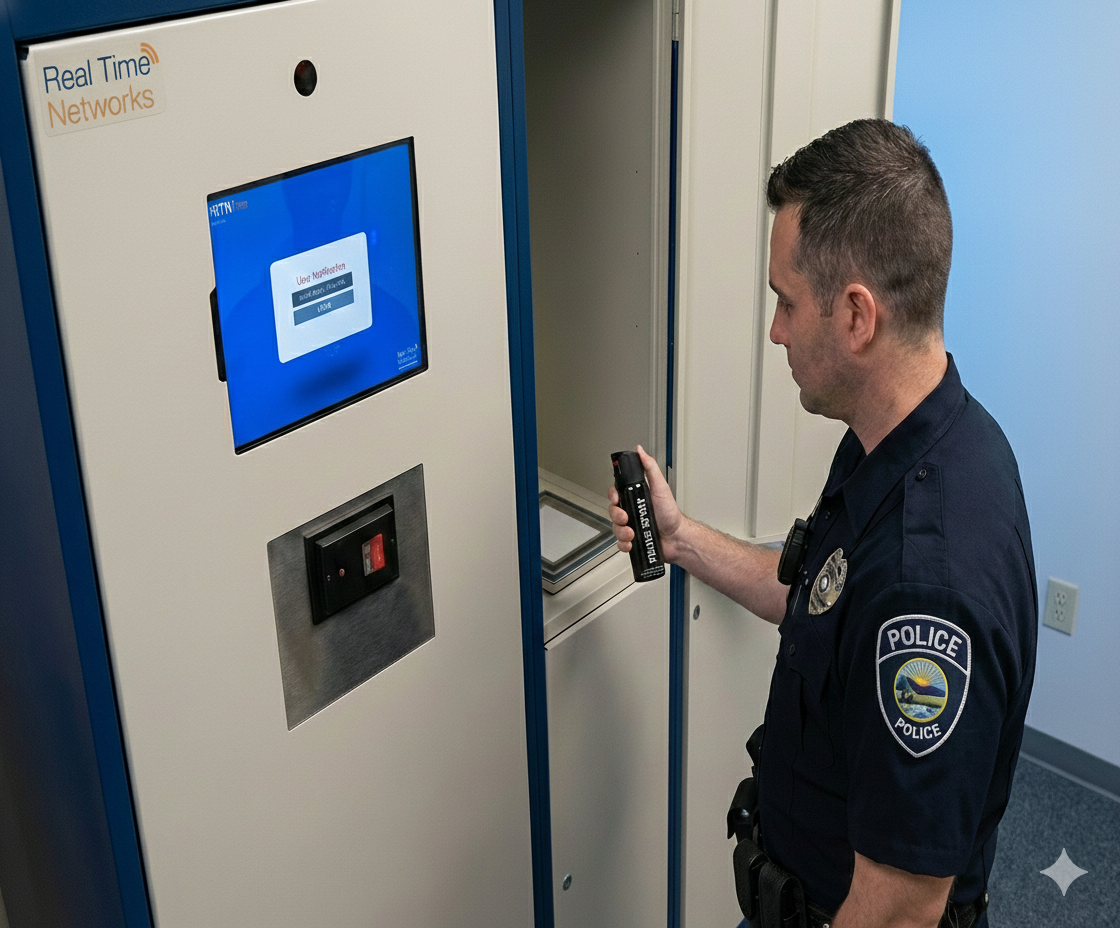By Jay Palter | May 1, 2024
5G wireless technology has significantly impacted many industries by increasing network speeds and connectivity to previously impossible levels. Physical security is one of the sectors that still stands to gain the most from this technological leap. With the potential for faster data transfers, lower latency, and enhanced connectivity, 5G is set to transform how security systems work. They will be more efficient, responsive, and capable of handling complex, data-intensive tasks.
But when does it make sense to invest in 5G physical security applications? And what are latency and bandwidth, anyway? Do they matter to security professionals? This article aims to answer those questions and more as it explores the 5G impact on security systems.

What is the Role of 5G in Physical Security?
5G is the fifth generation of wireless cellular infrastructure deployed across North America. Older 3G and 4G networks are still in use, but they could not support operations that depended on large volumes of data moving back and forth across networks. In physical security, that often means high-definition video and large data sets collected by Internet of Things (IoT) sensors. 5G technology promises to enhance physical security operations by providing the network transfer speeds required to support sophisticated modern 5G security applications.
>> Learn More: What You Should Know About IoT Security Solutions
What are latency and bandwidth, and why do they matter for physical security?
5G technology significantly improves physical security systems' network latency and bandwidth. Latency refers to the time it takes for data to travel from its source to its destination across a network. Think of it as the maximum safe speed limit on a highway. In security systems, lower latency means minimizing the time between detecting a security event and receiving the alert, allowing quicker response to potential threats or incidents.
On the other hand, bandwidth is the maximum rate at which data can be transferred over a network within a given amount of time, usually measured in megabits per second (Mbps) or gigabits per second (Gbps). Higher bandwidth allows more data to flow across a network. In our highway metaphor, greater bandwidth would mean more lanes open for traffic. For security systems, higher bandwidth means supporting high-definition video streams, large volumes of sensor data, and other information-intensive tasks without network bottlenecks or delays.
Key benefits of 5G for physical security
The 5G benefits for security are numerous.
Speed
With greater bandwidth and lower latency, 5G's most significant advantage is its ability to deliver data instantly. For security systems, this means quicker alerts and notifications, enabling security personnel to respond rapidly to routine events and emergencies.
Connectivity
5G's ability to connect a wide array of devices within a network enhances various security measures, such as perimeter security and access control. This interconnectedness ensures a comprehensive coverage area, minimizing blind spots and strengthening an organization’s overall readiness.
Real-time Analytics
Leveraging AI and machine learning, real-time video analytics can identify potential security threats from large data sets, like transaction logs of asset management systems or video surveillance feeds. 5G's low latency and higher bandwidth make it possible to analyze new events as your different physical security systems capture them. Your personnel get actionable intelligence faster and can make decisions faster.
Remote monitoring
With 5G, security professionals can monitor multiple locations from a centralized command center in real time. This capability ensures swift responses to incidents, even when you don’t have boots on the ground.
What are the 5G challenges in physical security?
While the transition to 5G offers numerous benefits, it also presents a few challenges that organizations looking to deploy new wireless should be aware of.
Cybersecurity risks
More connectivity creates more attack surfaces for hackers. The increased digital infrastructure deployed to make 5G security applications work raises concerns about the potential for cyberattacks.
Protecting 5G-connected devices against unauthorized access and data breaches requires physical security teams to work more closely with their network security counterparts to ensure proper protections are in place. This is called security convergence. While the concept has been around for decades, 5G networks and IoT deployments have put it front and center in many security teams’ minds.
Infrastructure upgrades
Adopting 5G technology necessitates upgrading existing security infrastructure to be 5G compatible, which can involve significant investment. External 5G infrastructure may still be rare in some rural parts of North America. Depending on where your work sites are located, you may be able to deploy 5G internally, but you will still be restricted to lower cellular network speeds externally.
How unifying your security environment with 5G helps you make sense of data
Integrating your security systems with 5G technology can significantly enhance your team's data collection abilities. The key to harnessing the full potential of connecting vast networks of sensors lies in adopting open architecture standards where all 5G security applications can communicate seamlessly. Such a platform centralizes data from diverse sensor types and systems into one unified solution.
For example, initially, you might integrate your video surveillance, access control, and intrusion detection systems into a single platform. This consolidation offers your security team a more comprehensive view of your environment, facilitating swift responses to threats or incidents. Then, as a second stage, you might incorporate additional systems like intercoms, building management, point-of-sale systems, or automatic license plate recognition through your surveillance network to enrich the data pool. This integrated approach enhances your team’s situational awareness and enables greater automation through event-triggered actions and reporting.
Built-in analytics tools and the emergence of a new generation of artificial intelligence (AI)- driven capabilities herald new frontiers for connected physical security. These new possibilities only exist because of the foundation laid by 5G connectivity. AI tools can perform tasks ranging from motion detection and traffic flow analysis to people counting and crowd density estimation.
An asset management system might trigger alerts when devices report a fault code and automatically dispatch technicians to retrieve the device. Meanwhile, the local system can lock down the faulty stored device so it doesn’t accidentally end up back in circulation. These offer valuable insights into both security and business operations.
Beyond merely alerting potential issues, these advanced AI capabilities also help filter out false alarms, allowing your team to concentrate on critical situations. Furthermore, based on the scenario, an AI-enhanced platform can provide step-by-step guidance from initial response to resolution, empowering your team to manage any situation confidently. This approach streamlines security operations and leverages data to drive informed business decisions.
>> Learn More: Everything You Need to Know About Artificial Intelligence and Physical Security
Future directions for 5G in physical security
5G technology will continue to transform how we carry out physical security in many profound ways. It is just the foundation, the first layer of a growing new generation of connected technologies that will open up new possibilities for improving our work.
By harnessing the power of 5G for their security, asset management, and access control activities, organizations can expect a transformation in how security operations are managed, with benefits including:
>> [Free Download] Best Practices for Physical Asset Management
Enhanced efficiency

The high data speeds and low latency of 5G enable real-time data analysis and decision-making, allowing quicker responses to security incidents.
Greater scalability

5G networks can support many devices simultaneously, facilitating the expansion of security systems to cover larger areas and incorporate more sensors and cameras without compromising performance.
Innovative applications

The capabilities of 5G open the door to new security applications, such as AI-driven video analytics for real-time threat detection, drone surveillance for hard-to-reach areas, and seamless integration of IoT devices for comprehensive security coverage.
>> Learn More: How to Secure IoT Devices
Improved adaptability

With 5G, security systems can become more flexible and adaptable, easily adjusting to organizations' evolving needs and threats.
And in security, we know that means it also opens up new possibilities for bad actors. Security professionals know they need to think from both sides. As the industry progresses towards widespread 5G adoption security, it stands on the cusp of a revolution in how it works. This technological shift has the potential to redefine norms around security and physical access, setting new standards for operational efficiency, responsiveness, and adaptability. By addressing the challenges head-on and fully leveraging the advantages offered by 5G, the future of physical security looks more reliable, intelligent, and interconnected than ever before.
Subscribe to our blog

Jay Palter
Vice President of Marketing & Partnerships






